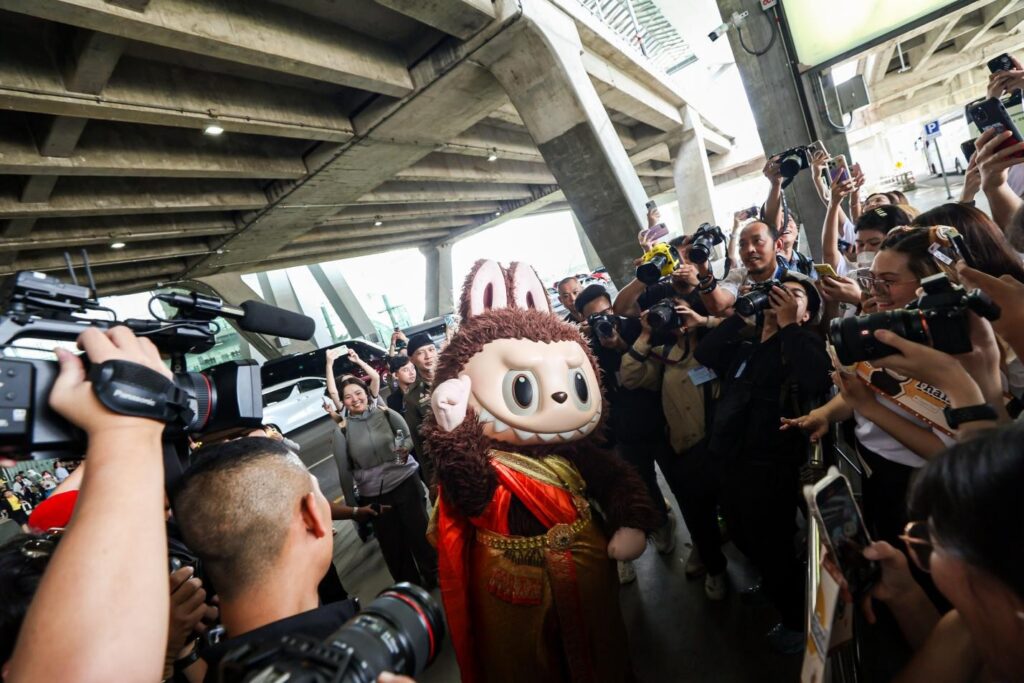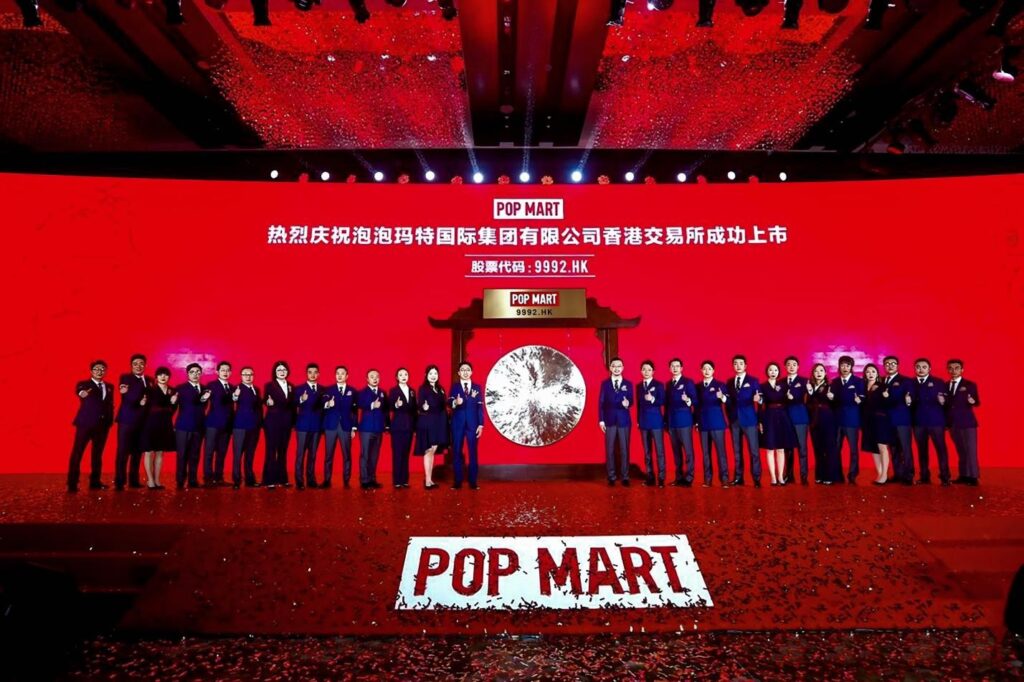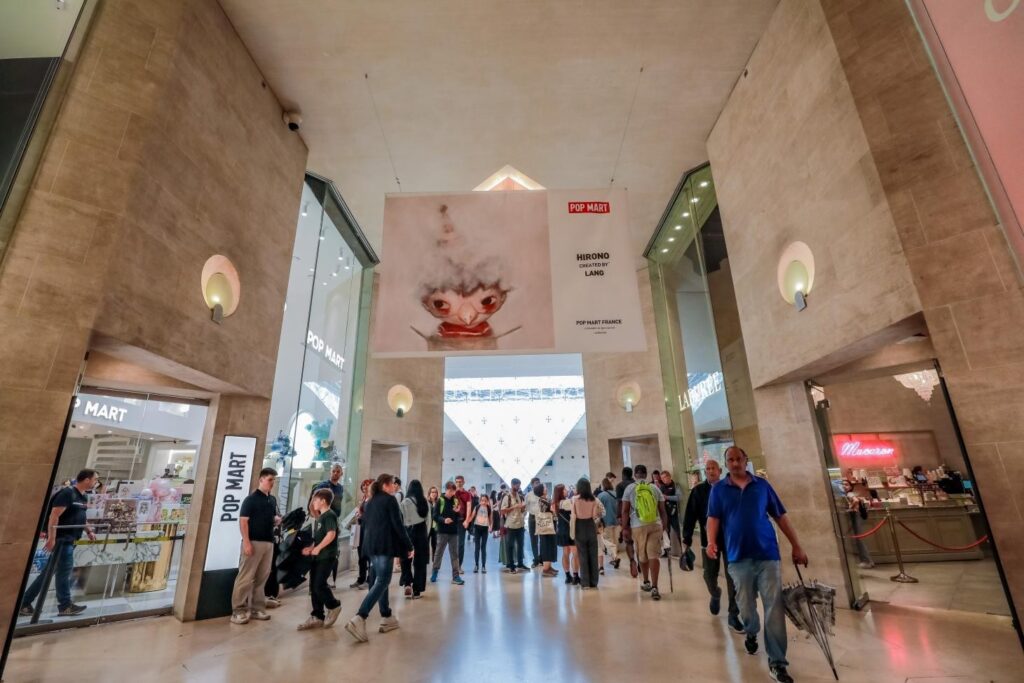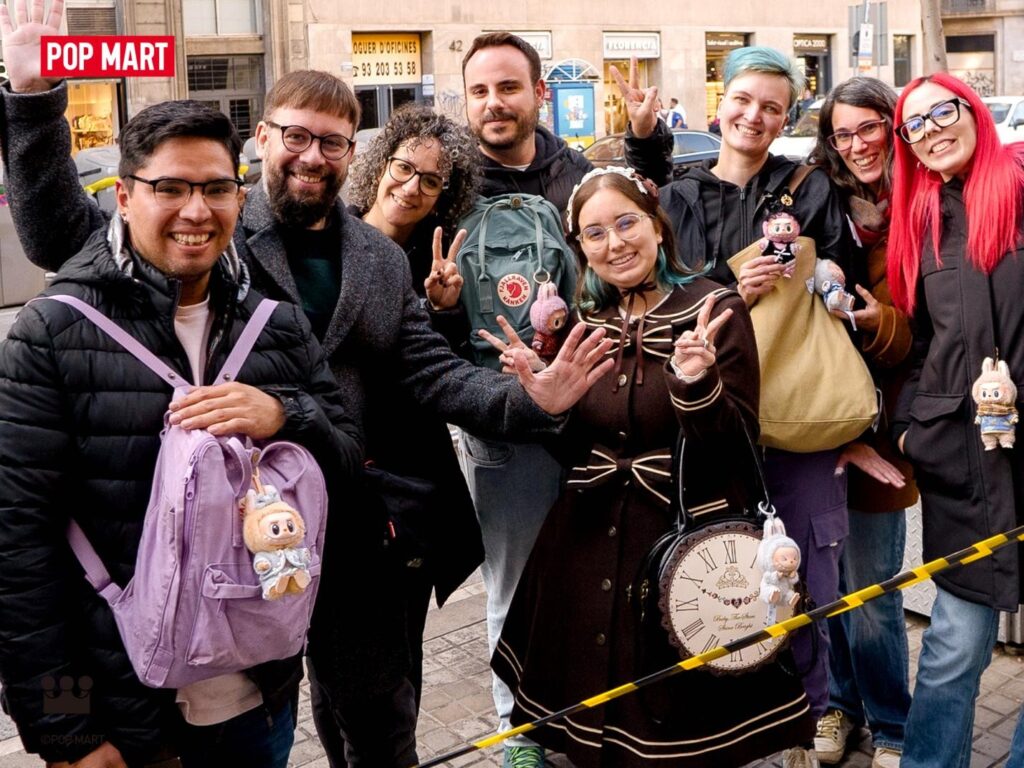From Beijing Boutique to Global IP Powerhouse: The Pop Mart Story
On March 26, 2025, POP MART announced its 2024 financial results: 13.04 billion yuan in revenue — crossing the 10-billion mark for the first time and marking a 106.9% year-over-year surge. During the earnings conference call, Grant Wang, Chairman and CEO of the company, noted that corporate growth had exceeded market expectations. “Looking ahead,” he said, “Pop Mart will place greater emphasis on global expansion and deepen its focus on IP operations.”
Considering the origin of Pop Mart, the milestone was even more impressive. Just over a decade ago, it was just a small store tucked away in Beijing, selling novelty knickknacks. Few would have predicted that selling figurines — hidden in mystery boxes and devoid of practical function — would one day give rise to a public company valued at over HK$100 billion (roughly US$13 billion).
The transformation from a small boutique to an IP powerhouse is inseparable from the vision and persistence of its founder, Grant Wang.

Who Is Grant Wang (Wang Ning) ?
The question hovered in investor circles for years, until December 11, 2020, when 33-year-old Grant Wang (Wang Ning) rang the bell at the Hong Kong Stock Exchange. At its IPO, Pop Mart briefly surpassed a HK$100 billion valuation, making it one of the most talked-about companies in China’s consumer-products wave of 2020–2021. (HSG led Pop Mart’s 2018 investment round and continued to support the company in subsequent funding rounds.)
Born in 1987, Grant Wang is the founder of Pop Mart and a quintessential example of China’s new generation of consumer entrepreneurs. Since launching the company in 2010, he’s built it into the country’s undisputed leader in designer toys. Characters like MOLLY, SKULLPANDA, and LABUBU have become icons in the collectibles community. While these names may not be very familiar to ordinary consumers, they’re rock stars to millions of fans. For scale: by December 2024, Pop Mart had over 50 million registered members.

The Journey Before the Breakthrough
Grant’s entrepreneurial streak emerged early. During the summer vacation after high school, he launched a scrappy soccer camp in his hometown. Without a venue or staff, he printed leaflets and recruited children at the school gate. By the end of the summer, he had dozens of students, and this was the first time he had tasted the flavor of turning a vision into reality.
That same instinct followed him into college. In 2006, Wang founded “Days Studio,” a student-run production team that shot documentary-style videos of campus life and sold them to classmates as keepsakes of their college years. One student who joined the crew, Liu Ran, would later become an executive director at Pop Mart.
In 2008, during his college years, Grant began experimenting with retail. He came across a business model known as a “grid shop,” where a store is divided into small booths and rented out to individual sellers. Grant and his classmates opened one near campus and named it “Grid Street.” It stayed afloat even after he left for internships and work in Beijing. When Wang decided to go all-in on a new venture, he sold Grid Street for about 200,000 RMB (roughly US$30,000) — seed capital that funded the first Pop Mart store in Beijing.
A Tiny Toy, a Big Leap
Pop Mart began as a hip concept store — more lifestyle boutique than toy retailer. Its name was inspired by Hong Kong’s LOG-ON chain. The model: source fashionable goods, mark them up, and sell them in Pop Mart.
Then, in 2015, everything changed.
A tiny 8-centimeter collectible figurine called Sonny Angel became a viral bestseller, accounting for about one-third of revenue at Pop Mart stores. The demand was clear: the public wanted collectible toys. Pop Mart was no longer just a gift shop – it was evolving into a platform for designer collectibles.
But there was a problem: Pop Mart didn’t own Sonny Angel. It was merely a distributor for the Japanese copyright holder, Dreams. Each time Grant wanted to open a store in a new city, he needed Dreams’ approval to sell the figurines. That dependency posed a risk. Later, as the number of Pop Mart stores increased, Dreams gradually began to reject Pop Mart’s sales applications.
“It felt like Shoe Dog,” Grant later said, referencing Nike founder Phil Knight’s memoir. Just as Knight turned a rejection from his Japanese supplier into Nike, Grant knew it was time for Pop Mart to control its destiny.

From Boutique Retailer to IP Powerhouse
In early 2016, Grant asked on Weibo: “Besides Sonny Angel, what other collectible figures do you love?” His team sifted through replies and began contacting designers. One name surfaced repeatedly: MOLLY, a big-eyed character created by Hong Kong artist Kenny Wong.
At the time, Grant was keenly aware of the potential behind the IP, and he flew to Hong Kong several times, eventually reaching a collaboration with the artist. By July 2016, Pop Mart had launched its first blind box series featuring Molly’s Zodiac figures. It was a smash hit. Molly has remained one of the brand’s most iconic characters ever since.
That moment marked Pop Mart’s transformation – from a trendy retailer into a vertically integrated toy company. Rather than just reselling, it began licensing original IP, working directly with artists, and even creating new characters in-house. Pop Mart would then manufacture these collectibles — high-quality figurines — and sell them through its stores and Robo Shops. Over time, it also secured licenses from the century-old entertainment giant like Disney and Warner.
In essence, Pop Mart became an IP engine – one that could turn a promising character into a physical, purchasable product for millions of fans. It found the flywheel: discover or develop a character, build product around it, create buzz, scale it.

The Designer Toys Boom
With the development of Pop Mart, the public’s curiosity and confusion are also increasing. Why were adults buying blind boxes filled with tiny, impractical figurines? What made them line up outside Pop Mart stores and trade online for rare editions?
The blind box craze baffled ordinary consumers. But to fans, the appeal was visceral: the thrill of surprise, the beauty of the designs, the sense of community. For a while, skepticism mounted. Some people questioned whether its success could last.
Pop Mart weathered the noise. And in doing so, it proved a bigger point: Pop Mart had not just ridden a wave, it helped define the category. Grant believes that the mission of Pop Mart is “To Light up Passion and Bring Joy.” Pop Mart was not just a player – it had become the flagship brand of the designer toys boom.

Beyond Boxes: Chasing the Bigger Dream
The next act for Pop Mart is all about thinking bigger – much bigger. As outlined in its IPO prospectus, Grant and his team identified two critical priorities for Pop Mart’s future: global expansion and building a multifaceted IP-centric ecosystem. In other words, turning POP MART into a group of businesses all revolving around its characters and stories.
For a young company, going global is a bold ambition. In recent years, many of Grant’s peers have embraced this goal. For Pop Mart, globalization simply means bringing its art toys to fans all over the world. As COO Sid (Si De) noted, for any consumer brand, international expansion is an inevitable growth path. As of the end of 2024, Pop Mart operates over 500 physical stores and more than 2,300 Robo Shops across 30+ countries and regions. Through multiple cross-border e-commerce platforms, the company has reached audiences in over 90 countries and regions, bringing joy to young consumers around the world.
If the past decade was about proving art toys could go mainstream, Pop Mart’s next chapter is about scaling its IP to global entertainment heights.
From the outset, Grant and his team made two strategic bets: expand globally and evolve Pop Mart into a multi-dimensional IP operator. In this new phase, toys are just the beginning.
But the greater ambition of Pop Mart lies in IP expansion. In September 2023, Pop Mart opened POP LAND in Beijing Chaoyang Park — the first immersive IP-themed park in the art toy industry. It’s a modest start, covering about 40,000 square meters (roughly one-thirtieth the size of Shanghai Disneyland), but for Pop Mart, it marked a bold leap toward translating its IP into real-world experiences. Also, Pop Mart has launched animation studios to bring its characters to life in new media.

Pop Mart’s vision is audacious: to become a globally recognized IP empire. It may take decades. But with Grant’s entrepreneurial spirit and a track record of turning the unlikely into the inevitable, it’s a journey well underway.
This article is adapted from an excerpt of 因为独特 (Because It’s Unique) by Li Xiang, originally published by Yicai on April 9, 2025